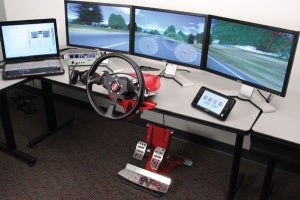
As almost-silent hybrid and ‘quiet vehicles’ gain in numbers alongside their Internal Combustion Engine (ICE) counterparts, pedestrians no longer hear the usual motorcar noise cues they are used to, which may compromise safety.
Research by the National Highway Traffic Safety Administration (NHTSA) in the US has identified that quiet vehicles are more likely to be involved in accidents with people than normal ICE vehicles, so pedestrian safety is an increasing consideration for quiet vehicle manufacturers.
The most obvious dangers occur where people and vehicles exist in close proximity, such as town centres, where wind and tyre noise at speeds below 30km/h are quiet and background noise is enough to mask motor and power train sound.
With legislative proposals on two continents already, it appears likely that global legislation within the next decade will require manufacturers to implement external warning systems, raising the question – how should a quiet vehicle sound?
There are three main groups involved in this debate – environmentalists, who want a quiet environment with greatly reduced traffic noise; pedestrians and the partially sighted, who want sounds that clearly identify moving vehicles; and motor manufacturers, who want to project a brand image.
Although these three groups are not necessarily totally opposed, finding the right compromise is not a simple task. To address this issue, Brüel & Kjær’s Exterior Sound Simulator (ESS) software is designed to accurately simulate the exterior sounds of any vehicle moving through a virtual environment.
In the design phase of a project, these sounds can be modified in real-time by the user, and the sounds of specific vehicles swiftly assessed for a variety of scenarios and background noise conditions.
Using the same simulation in the evaluation phase, selected sounds can quickly be tested and experienced by many people in the lab, removing the need to stand on a variety of street corners as test vehicles are driven by at different times of day.
One great benefit of working in a simulated environment is that the scenario is controlled; as a result, multiple evaluations can be made with comparable results in a compressed timeframe.
A simulated environment can also account for future scenarios where electric cars – and their artificial sounds – are commonplace, by bringing multiple vehicles into the simulation with or without the designed exterior sound.

